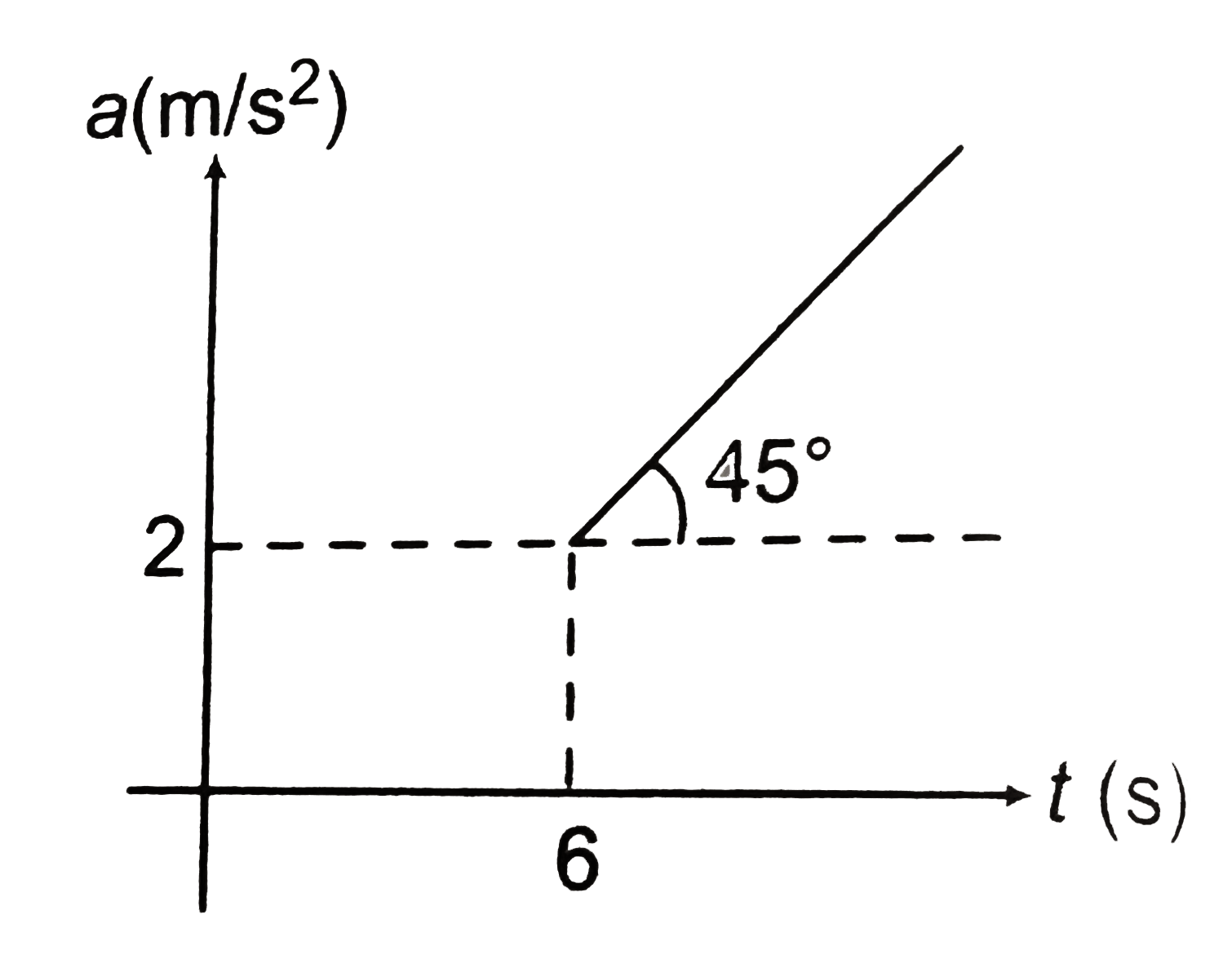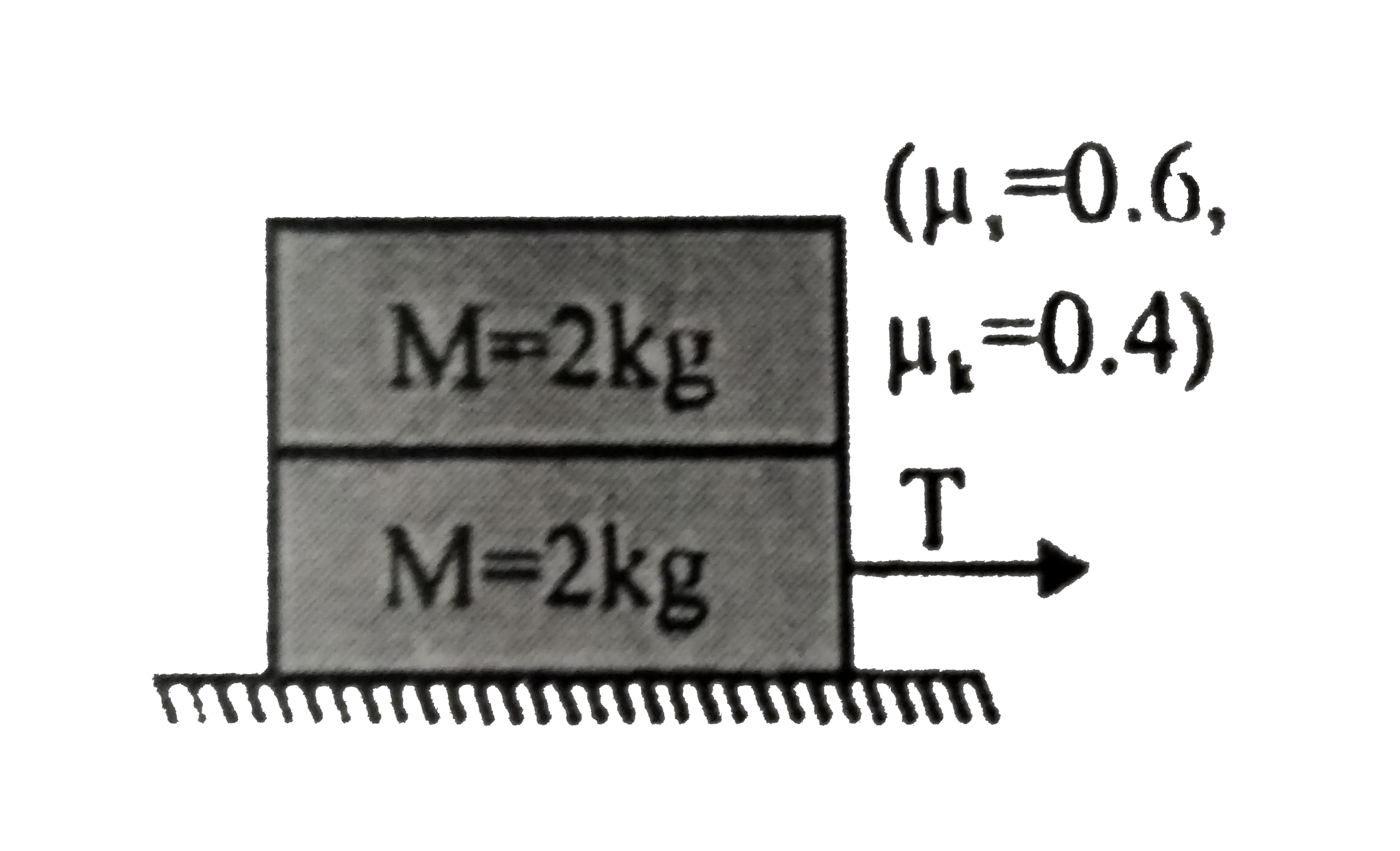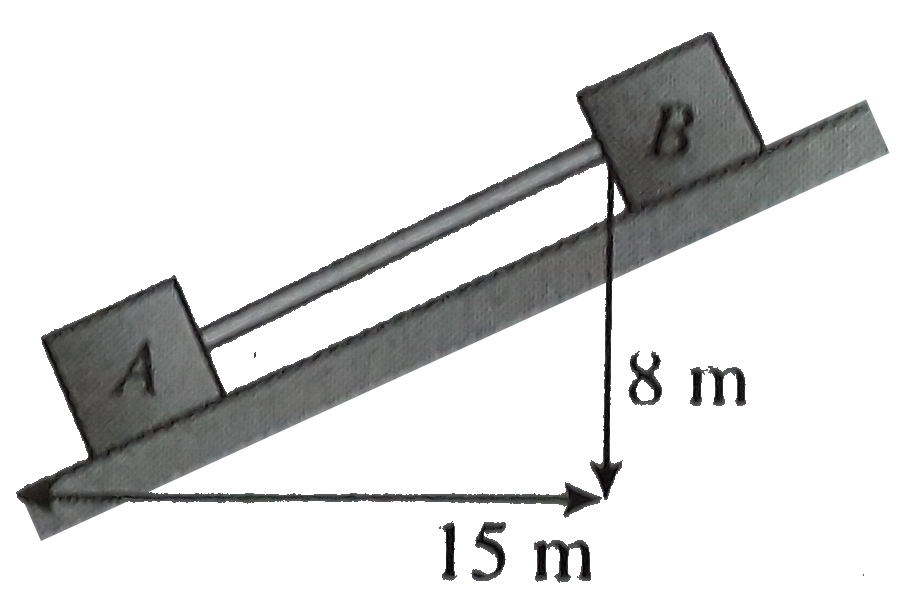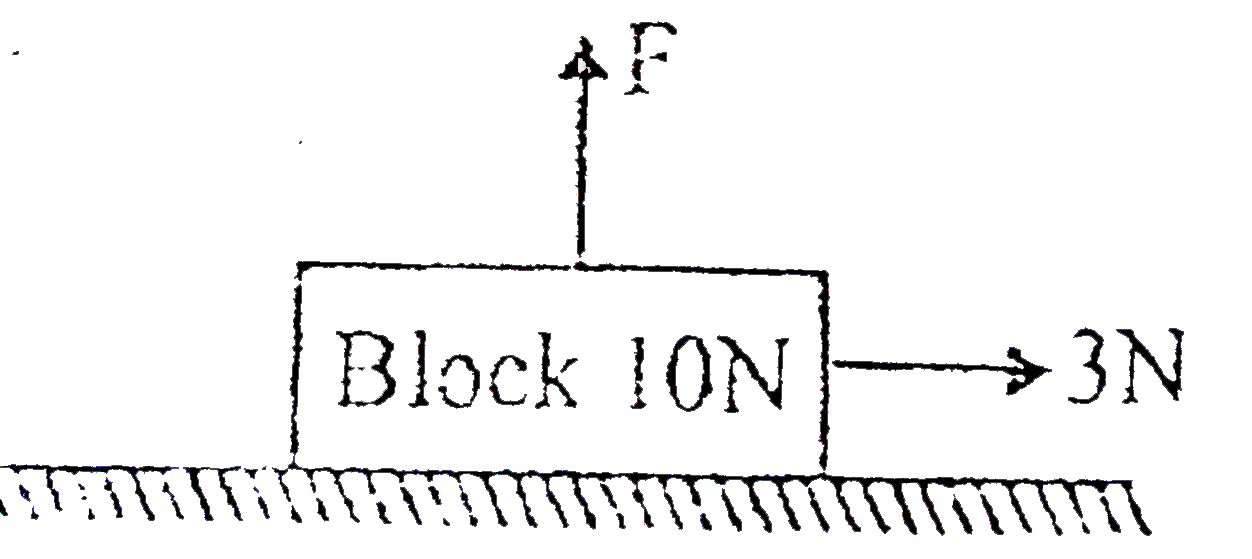Repeat the above problem, if instead of μ, we are given μs and μk,where μs=0.6 and μk=0.4.
(a) R=mg=20N
μsR=0.6×20=12N
μkR=0.4×20=8N
Upto 6ssituation is same but after 6s, a constant kinetic friction of 8N will act. At 6s, friction will suddenly change from 12N(=μsR)to8N(=μsR) and direction of friction is opposite to its motion. Therefore, at 6s it will start with an inital acceleration.
a=decreasein figuremass=12−82=2m/s2
For t≤6s
f=F=2t ...(i)
Fnet=F−f=0
a=Fnetm=0
For t≥6s
F=2t
f=μR=8N
Fnet=F−f=2t−8
a=Fnetm=2t−82=(t−4)
At t=6s,we can see that, ai=2m/s2
Further, a−t graph is a straight line of slop =1 and intercept =−4. Corresponding a−t graph is as shown in figure.

Topper's Solved these Questions
- LAWS OF MOTIONBOOK - DC PANDEY ENGLISHCHAPTER - LAWS OF MOTIONEXERCISE - Miscellaneous Examples
9 Videos
- LAWS OF MOTIONBOOK - DC PANDEY ENGLISHCHAPTER - LAWS OF MOTIONEXERCISE - Exercise 8.1
10 Videos
- LAWS OF MOTIONBOOK - DC PANDEY ENGLISHCHAPTER - LAWS OF MOTIONEXERCISE - Medical entrances gallery
39 Videos
- KINEMATICS 1BOOK - DC PANDEY ENGLISHCHAPTER - KINEMATICS 1EXERCISE - INTEGER_TYPE
15 Videos
- LAWS OF THERMODYNAMICSBOOK - DC PANDEY ENGLISHCHAPTER - LAWS OF THERMODYNAMICSEXERCISE - Level 2 Subjective
18 Videos
Similar Questions
The coefficient of static and kinetic friction between the two blocks and also between the lower block and the ground are μs=0.6andμk=0.4 Find the value of tension T applied on the lower block at which the upper block begins to slip relative to lower block.

View SolutionBlocks A and B in the Fig are connected by a bar of negligible weight .Mass of each block is 170kg and μA=0.2 and μB=0.4 where μA and μBare the coefficient of limiting friction between bloock and plane calculate the force developed in the bar(g=10ms−2)

View SolutionThe dimensions of μ0 are
View SolutionAn intially parallel cyclindrical beam travels in a medium of refractive index μ(I)=μ0+μ2I, where μ0 and μ2 are positive constants and I is intensity of light beam. The intensity of the beam is decreasing with increasing radius.
Answer the following questions :
The initial shape of the wavefront of the beam is
View SolutionAn intially parallel cyclindrical beam travels in a medium of refractive index μ(I)=μ0+μ2I, where μ0 and μ2 are positive constants and I is intensity of light beam. The intensity of the beam is decreasing with increasing radius.
Answer the following questions :
The speed of light in the medium is
View SolutionAn intially parallel cyclindrical beam travels in a medium of refractive index μ(I)=μ0+μ2I, where μ0 and μ2 are positive constants and I is intensity of light beam. The intensity of the beam is decreasing with increasing radius.
Answer the following questions :
As the beam enters the medium, it will
View SolutionA body of mass 60 kg is pushed up with just enough force to start it moving on a rough surface with μs=0.5 and μk=0.4 and the force continues to act afterwards. What is the acceleration of the body ?
View SolutionIn the figure shown, if friction coefficient of block 1 kg and 2kg with inclined plane is μ1=0.5 and μ2=0.4 respectively, then

View SolutionA box with weight 10N rests on a horizontal surface. A person pulls horizontally it with a force of 3N and it does not move. To start its motion, a second person pulls it vertically upward. If μs=0.5 and μk=0.3, then find the smallest vertical force for which the box starts moving.

View SolutionCalculate the dispersive power for crown glass from the given data
μv=1.523 and μr=1.5145.
View Solution
